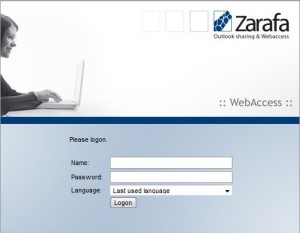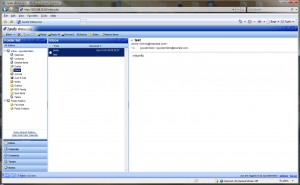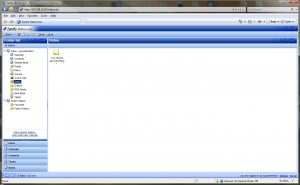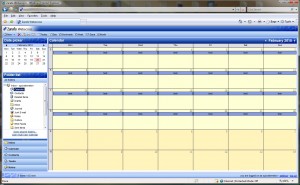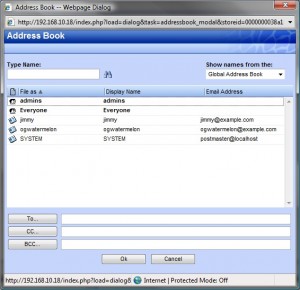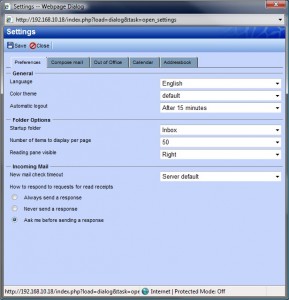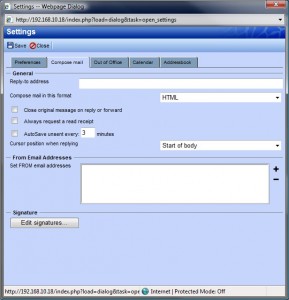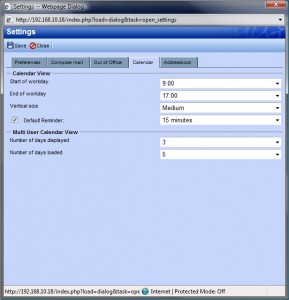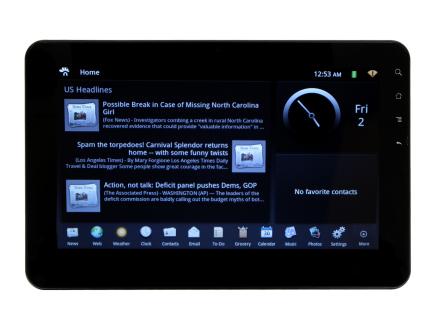Zarafa a Linux based Exchange replacement
I have been messing around with Zarafa for a few weeks and it is a really cool email server without all of the cost. Zarafa is the MS Exchange replacement for Linux servers, which allows you to share your e-mail, calendar and contacts via Outlook or Webaccess. However for Outlook support you have to purchase the licenses based on the version and the number of users you plan to have. They have standard, professional, and enterprise versions and they all have increasing features. There is also a community version that has Webaccess and 3 licenses for Outlook. It also has an add on called Z-push that adds support for model devices.
.
The following devices are supported by Z-Push:
- Windows Mobile based devices
- Apple iPhone
- Nokia E-series
- Palm Treo 650, 680, 700
- Sony Ericsson P990, W950, M600
- Android (via third party tool Touchdown)
Zarafa provides full functionality webaccess completely in the Outlook “Look & Feel”. It includes access to email, calendars, contacts, tasks, shared folders and Public Folders. The AJAX implementation with drag & drop support is used be competitive with desktop email applications.
Support for all Outlook versions
The Zarafa architecture is completely based on the mapi standard to have the most stable Outlook integration. All Outlook version from 2000 to the latest 2007 are fully supported. Via the offline caching mode users can also access their email when they are out of the office. All Outlook communication go over a secure HTTP connection.
Wide range of mobility support
Zarafa supports via the opensource Z-Push project all Activesync compatible devices. For more information, see the Mobility section.
Active Directory / LDAP integration
Zarafa can be coupled in existing Active Directory or LDAP based environments. Zarafa will automatically import all your users into the Zarafa database. New users are real-time synchronized to the Zarafa database. Via an additional schema attributes like quota and aliases can be configured.
POP3 / IMAP support
Via the POP3 / IMAP gateway you can always retrieve your email from the Zarafa database. Users working with POP3 or IMAP clients like Thunderbird can therefore use the same mail store as your Outlook users, ensuring that e-mails are never stored twice and that everything is always in-sync.
Advanced database storage
To make the sharing of all the information possible, everything is stored in an opensource MySQL database. The storage of attachments can be done on the file system to keep your database smaller and faster.
Single Sign On
Via the Single Sign On ntlm authentication your domain logon credentials will be used to login your Outlook client.
Brick level backup
Via Zarafa Brick level backup you can make backups of individual mailboxes. Via the Zarafa-restore tool it easy to restore a single item, folder or even a complete mailbox. The Brick level backup can also be used for Public Folders.
Some of the features that I like the best is the calendar and the Webaccess. The ical feature allows you to keep track of events and even allow other users to have access to your calendar. I like this because I can have my events on a calendar and allow others to view it without them being able to change things. The webaccess it also very impressive and has tons of functions from your address book to the task manager. It was created to be very similar to the Outlook and the Exchange Online Web Access, it is very close. Here are some screen shots of the Webaccess interface.
There is also a settings link in the lower right hand corner that allows you to setup your email account. It has things like your email signature, out of office message, calendar settings, and your address book. Here are pics of the menus.
You can set quotas for the user accounts keep disk usage as small or as large as you want. This can be done through the server.cfg file in the /etc/zarafa directory. This will set global limits for all of the users. You can also create limits as you add the users to the Zarafa.
Adding users isn’t the easiest thing around if your not setup for ActiveDirectory, but it is pretty easy once you get the syntax down. This is done through the zarafa-admin script that is located in the /usr/bin directory. The zarafa-admin command is also used to delete users and modify account information. Chapter five of the Zartafa manual has more indepth usages for the command. The following is the syntax for the zarafa-admin command.
zarafa-admin -c <user name> -p <password> -e <email address> -f <full name> -a <administrator privilages>
The hardest part I had was setting up the SMTP server in Linux. It first started out using Sendmail, the Zarafa manual has some of the things you need to do to setup Sendmail for Zarafa use. Anyhow I had trouble getting it to work correctly so I moved over to Postfix. After a little configuration of the main.cf file with some help from google and a guide or two. I got it all working. Plus Zarafa uses MySQL as the database engine for the email server, and if you need some help with command line for MySQL there are quit a few guides out there that really help. I would show my config files but for security reasons I won’t put them in the blog. So all in all this is a really great program, the community edition takes some work to get everything working. But it has a really good webaccess interface and has most of the features of Outlook making it easy to learn because most people have used Outlook before. You can find the software and manuals at www.zarafa.com. There are a few virtual applances out there that will allow you to use Zarafa without having to build a machine of your own. I plan to change over to Zarafa in the near future, check it out. In my future posts I will cover the setup of Sendmail and Postfix.


